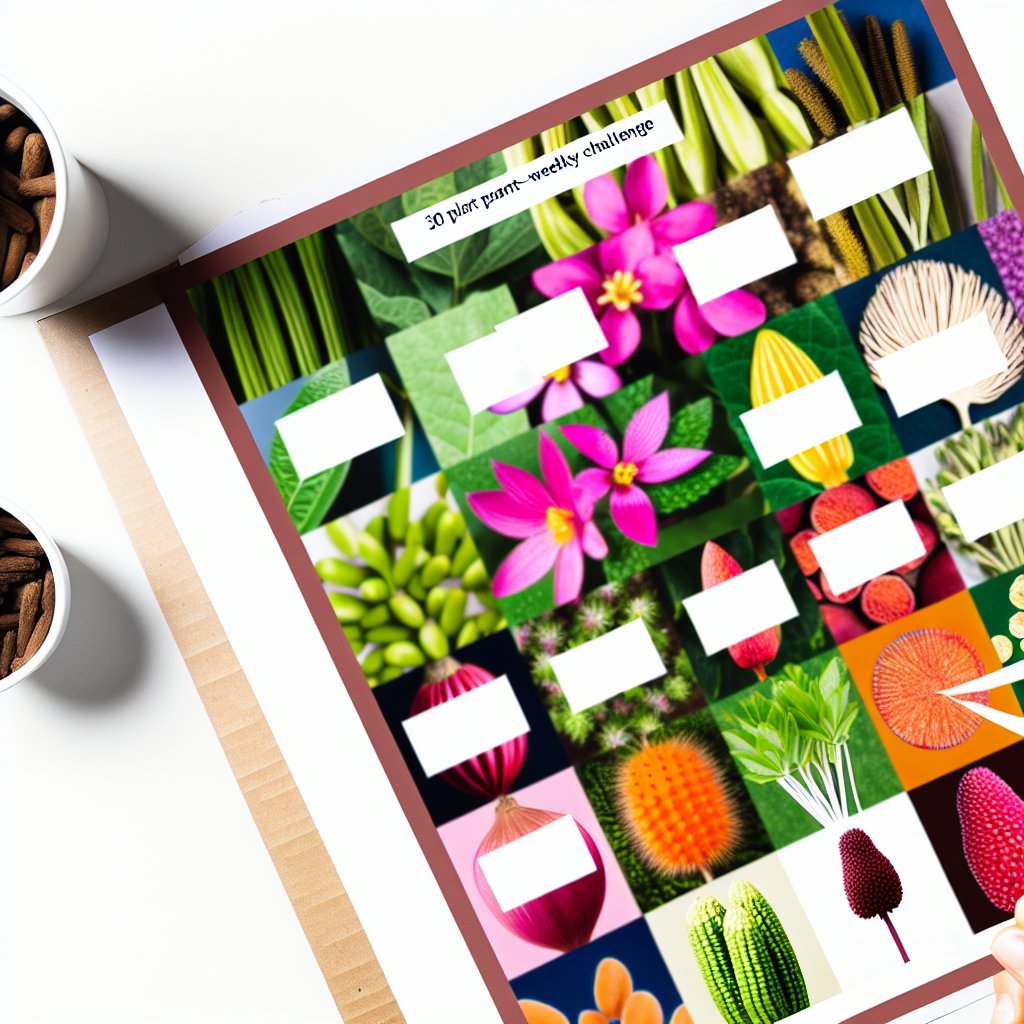Fiber Diversity Guide – 30 Plant Weekly Challenge
Introduction
In today’s world, where chronic health conditions like obesity, type 2 diabetes, and autoimmune diseases are on the rise, more people are exploring natural healing strategies. Among the most powerful and science-supported of these is dietary fiber — not just in quantity, but in its diversity.
More than simply aiding digestion, fiber supports gut health, helps in detoxification, stabilizes blood sugar, and contributes to immune health. Science now shows that consuming a variety of plant-based fibers strengthens the gut microbiome, which in turn bolsters overall health. This understanding has given rise to a transformative nutritional lifestyle: the 30 Plant Weekly Challenge.
This challenge encourages consuming at least 30 different plant foods per week — including vegetables, fruits, grains, legumes, nuts, seeds, herbs, and spices. It’s about adding variety, not restricting.
More than a health trend, this approach brings together modern nutrition science and ancient healing practices — such as Ayurveda, Traditional Chinese Medicine, and homeopathy — all of which focus on digestive and immune health. By eating a rainbow of plant life each week, individuals can create a gut-healthy, energizing, and sustainable eating habit.
Features and Scientific Basis
The surge in popularity of the 30 Plant Weekly Challenge stems from research like the American Gut Project, one of the largest microbiome studies globally. Researchers from the University of California San Diego found that individuals eating more than 30 types of plant foods per week had notably greater gut microbiome diversity compared to those eating less than 10. This matters because a richly diverse gut microbiome supports immune strength, lowers inflammation, and may reduce the risk of chronic disease.
Each type of plant food contains a unique blend of dietary fibers, polyphenols, and phytochemicals that feed different strains of beneficial gut bacteria. These bacteria, in turn, produce short-chain fatty acids (SCFAs) like butyrate, which nourish gut cells, support detoxification, and foster metabolic health.
According to a 2021 article in Nature Reviews Gastroenterology & Hepatology, SCFAs help reduce the incidence of a wide range of diseases — from digestive disorders to cardiovascular and even neurodegenerative conditions.
Ancient healing traditions have long recognized the value of variety. In Ayurveda and Traditional Chinese Medicine, seasonal and botanical diversity is considered vital to health. Herbs like ginger, turmeric, and fennel not only aid digestion but offer specific health benefits due to their fiber and phytonutrient profiles.
A study published in Cell Host & Microbe found that increasing fiber variety led to expansion in microbial gene functions related to immune signaling and fiber breakdown. Participants noted improved energy, digestion, and even mental clarity — indicating that gut health plays a key role in whole-body wellness.
Lastly, prebiotic fibers — different from probiotics — nourish beneficial bacteria already present in the gut. Foods high in prebiotics include bananas, asparagus, chicory root, onions, and oats. According to the National Institutes of Health, including these fibers in the diet supports a thriving microbiome and contributes to overall gastrointestinal and immune health.
Getting Started: Practical Tips
Jumping into the 30 Plant Weekly Challenge doesn’t require a complete diet overhaul. Start by tracking how many different plant foods you eat in a week. Each unique type — not serving size — counts. For example, red lentils and green lentils count as two.
Here are a few easy ideas to boost variety:
– Add assorted seeds (e.g., chia, flax, pumpkin) to smoothies or yogurt.
– Load up on leafy greens: kale, arugula, spinach, and Swiss chard each count separately.
– Use fresh herbs like basil, parsley, cilantro, and mint not only for flavor but for extra fiber.
– Swap refined snacks for roasted chickpeas, trail mix, or homemade granola.
– Cook with a variety of legumes — black beans, kidney beans, adzuki, or lentils.
– Explore ancient grains like millet, quinoa, farro, and amaranth.
You can even count plant-based teas (like chamomile, rooibos, or hibiscus) for a boost. The goal is exploration, not perfection.
Conclusion
The 30 Plant Weekly Challenge is a wellness strategy rooted in both cutting-edge science and centuries-old healing traditions. By focusing on fiber diversity from a broad spectrum of plant-based foods, individuals can cultivate a healthier, more vibrant microbiome — and in turn, improved immunity, digestion, and overall vitality.
This isn’t about restriction or rigid dieting. It’s about celebrating the richness of the plant kingdom and the restorative power of naturally nourishing the body through variety. Every new seed, herb, fruit, or grain you add becomes part of a symphony of healing within your gut.
Start small, keep track, and embrace the abundance of real food. Your microbiome, and your entire body, will thank you.
Additional Resources
For a plant-tracking checklist, recipe ideas, and community support, visit the Foodade Fiber Challenge Hub.
References
– American Gut Project: The Gut Microbiome and Diet Diversity
– Nature Reviews Gastroenterology & Hepatology: Gut microbiota-derived short-chain fatty acids
– Cell Metabolism: Diet–Microbiota Interactions
– Cell Host & Microbe: Sustainable Diets and the Gut Microbiome
– NIH Office of Dietary Supplements: Gut Microbiome Factsheet
Concise Summary
The 30 Plant Weekly Challenge is a holistic health strategy encouraging the consumption of at least 30 unique plant-based foods weekly to enhance gut microbiome diversity. Research shows that increased fiber variety supports digestion, reduces inflammation, and boosts immunity. Rooted in both cutting-edge science and traditional healing systems like Ayurveda and homeopathy, this abundance-focused challenge promotes natural healing through real, diverse foods. Simple changes — like adding herbs, legumes, and seeds — can lead to powerful shifts in wellness. Start small, track your diversity, and let your microbiome thrive. For guides and tools, visit foodade.com.

Dominic E. is a passionate filmmaker navigating the exciting intersection of art and science. By day, he delves into the complexities of the human body as a full-time medical writer, meticulously translating intricate medical concepts into accessible and engaging narratives. By night, he explores the boundless realm of cinematic storytelling, crafting narratives that evoke emotion and challenge perspectives.
Film Student and Full-time Medical Writer for ContentVendor.com



